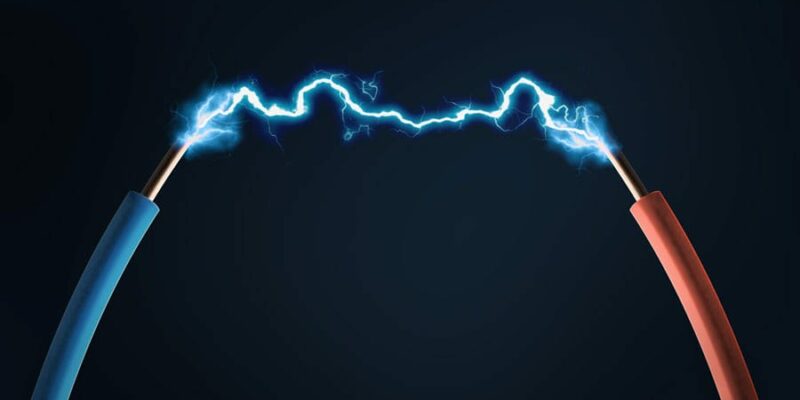High-voltage electrical equipment poses a significant hazard to workers. Electrical shock, burns, and arc flash are all potential hazards that can cause serious injury or death. OSHA high voltage permits are necessary to ensure that workers who are working around high voltage equipment have the proper training and equipment to safely perform their work.
To prevent accidents and protect workers, OSHA recommends safe work practices such as de-energizing electric equipment before inspection or repair, and following lockout/tagout procedures to ensure that the de-energized equipment remains safe while undergoing maintenance. However, there will be some circumstances where it is necessary and allowable to work on energized equipment. In those cases, a high voltage permit (or energized electrical work permit) helps mitigate risks.
What is an Energized Electrical Work Permit (EEWP)?
Because of the risks, working on energized electrical equipment should be avoided in most cases. At the same time, there are two scenarios in which a qualified worker can work on live parts, as long as an energized electrical work permit (EEWP) has been completed and approved by an authorized person.
- When de-energizing would introduce additional or increased hazards, such as interrupting essential life support, emergency alarms, or ventilation systems.
- When the organization can show that de-energizing the system is not feasible due to equipment design or operational limitations.
Under either of these circumstances, work can proceed as long as procedures are followed to prevent electrical shock and arc flash.
Elements of an Energized Electrical Work Permit
Here you can download a file with the most basic example of an energized electrical work permit. As you can see, it includes the request and justification for the work to be completed, the job analysis including associated hazards, and acknowledgment and approval signatures.
Arc Flash Risk Assessment
An arc flash is a phenomenon where a flashover of electric current leaves its intended path and travels through the air from one conductor to another, or to a ground. The results are often violent, and serious injury or death can occur when a person is in close proximity to the arc flash.
For that reason, when it’s necessary to work on an energized circuit and the equipment operates above 50 volts, a qualified person must perform an arc flash risk assessment to determine whether an arc flash hazard exists. In most cases that will mean that safety measures must be in place, including proper PPE.
Shock Hazard Analysis
A shock hazard analysis is performed by a qualified person to determine the voltage that personnel could be exposed to. Based on that assessment, boundary requirements and PPE will be required to minimize the risk of electric shock.
Arc Flash Boundary and Shock Protection Boundaries
NFPA 70E specifies approach boundaries to protect workers near energized electrical equipment from shock and arc flash risks. Each boundary depends on the risk for the specific equipment. The boundaries may limit who can approach within that boundary depending on their level of training.
- Arc Flash Boundary: This boundary (often the farthest boundary from the exposed energized electrical conductors) indicates where an employee would be subject to a curable second-degree burn if an arc flash occurred.
- Limited Approach Boundary: This boundary indicates an approach limit where a shock hazard exists.
- Restricted Approach Boundary: This approach limit indicates an increased risk of shock.
PPE for High Voltage Work

Any employees who work directly with electricity are required to use the appropriate personal protective equipment, which may vary depending on the job they perform. Equipment designed for electrical safety may include:
- rubber insulating gloves
- hoods
- sleeves
- matting
- blankets
- line hose
Safety Guidelines for Electrical Work
OSHA standards cover many electrical hazards in various industries, including General Industry and Construction. Energized electrical work permits are merely one aspect of a much broader set of electrical safety requirements. In some work situations, a task that requires an EEWP may also require a confined space permit as well.
OSHA Electrical Safety Standards
OSHA general industry electrical safety standards are covered in Title 29 Code of Federal Regulations (CFR).
- Part 1910.302 through 1910.308 — Design Safety Standards for Electrical Systems
- Part 1910.331 through 1910.335 — Electrical Safety-Related Work Practices Standards
NFPA Electrical Safety Standards
OSHA’s electrical standards are based on the National Fire Protection Association Standards. These standards are designed to help to avoid workplace injuries and fatalities due to an arc flash hazard, arc blast, electric shock, or electrocution.
- NFPA 70, National Electric Code provides detail about how to design and install safe and effective electrical systems.
- NFPA 70E, Electrical Safety Requirements for Employee Workplaces explains how employers can keep their workplace safe and the specific procedures they can put in place.
State Standards
Although OSHA operates a federal occupational safety and health program, many states also operate their own OSHA-approved programs. States can have their own state plans (safety regulations) for electrical hazards as long as they are at least as stringent as OSHA standards. Michigan’s electrical standards for General Industry and Construction differ in several ways from OSHA standards for electrical hazards.
EMDS Offers Assistance with High Voltage Permit Compliance
An EEWP should be obtained before electrical workers undertake any task that involves an energized circuit. Employers can ensure worker safety and protect themselves from legal liability by understanding the regulations, performing electrical safety training, and ensuring that an Energized Electrical Work Permit process is in place.
EMDS offers consulting services for OSHA hazardous work permitting for General Industry or for Construction safety to help your business maintain an electrical safety program compliant with all the relevant safety standards for electrical work. Our safety compliance consultant assists with maintaining compliance with OSHA electrical standards and other requirements. In addition to consulting, EMDS also offers electrical safety training as part of its OSHA 10/30 Hour training programs.

